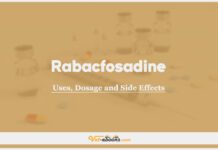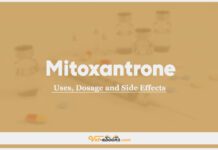Asparaginase for Dogs & Cats: Dosage, Uses, and Side Effects Guide

Overview
Asparaginase is an enzyme-based antineoplastic drug used in veterinary medicine for dogs and cats, particularly for treating lymphomas and leukemias in dogs and cats. It’s typically included in multi-agent chemotherapy protocols to help induce remission, support rescue therapy, or manage cases where traditional cytotoxic drugs pose higher risks.
Its mechanism involves depleting extracellular asparagine, an amino acid that some tumor cells cannot produce on their own. This disruption of protein and DNA synthesis results in targeted cancer cell death, with minimal effects on most normal cells.
Uses of Asparaginase For Dogs and Cats
- Treatment of Lymphoma and Leukemia (Dogs & Cats): Most commonly used for high-grade lymphoma and acute lymphocytic leukemia (ALL). Often part of combination protocols like CHOP (Cyclophosphamide, Doxorubicin, Vincristine, Prednisone).
- Remission Induction & Rescue Therapy: Useful for inducing remission or as rescue treatment in relapsed cases or patients with comorbidities that limit other chemotherapy options.
- First-line Agent in Cats: Often included early in feline lymphoma protocols due to favorable tolerance and anticancer effect.
- Alternative in Fragile Patients: Preferred in animals where bone marrow suppression must be avoided due to its non-myelosuppressive profile.
- Transmissible Venereal Tumor (TVT): Occasionally used in dogs alongside vincristine in selected cases.
Dosage of Asparaginase For Dogs and Cats
For Dogs
- The standard asparaginase dosage in dogs for chemotherapy protocols (e.g., lymphoma treatment) Do not exceed 10,000 IU per patient IM or SC.
- Transmissible venereal tumor (TVT): 200 IU/kg or 5,000 IU/m2 SC (Week 1), followed by vincristine 0.025 mg/kg IV (Week 2). Repeat cycle every 2 weeks for 2–5 weeks IM or SC.
For Cats
- Lymphoma or Leukemia: 400 IU/kg or 10,000 IU/m2 IM or SC. Maximum dose: 10,000 IU per cat.
For Other Species
- Horses, Cattle, Small Mammals: Limited data or experimental use only. Use under veterinary oncologist guidance.
Drug Dosage Calculator
You Should Give:
Side Effects of Asparaginase in Dogs and Cats
Asparaginase is generally well-tolerated, but two major categories of side effects may occur: hypersensitivity reactions and effects on protein synthesis.
1️⃣ Hypersensitivity Reactions
- More common with repeated doses, especially in dogs.
- Signs include vomiting, diarrhea, urticaria (hives), pruritus, dyspnea, restlessness, hypotension, and collapse.
- Rare in cats.
- Pretreatment with diphenhydramine (2 mg/kg IM or SC) is recommended in dogs to reduce risk.
2️⃣ Gastrointestinal and Metabolic Effects
- Hemorrhagic pancreatitis (especially in dogs)
- GI signs: nausea, vomiting, diarrhea
- Hepatotoxicity: may lead to hyperammonemia
- Coagulation disorders and increased bleeding risk
3️⃣ Hematologic Effects
- Bone marrow suppression is rare (not typically myelosuppressive)
- May cause coagulation abnormalities due to protein synthesis disruption
4️⃣ Metabolic & Endocrine Effects
- Hyperglycemia due to altered insulin synthesis
- Subclinical hyperammonemia may occur; rare acute cases reported
Contraindications of Asparaginase in Animals
Asparaginase should not be used in animals with certain conditions due to the risk of serious side effects. Below are situations where its use is not recommended or requires extra caution:
- Do not use in animals with active or past pancreatitis — this may lead to life-threatening hemorrhagic pancreatitis.
- Avoid use in animals that have had a severe allergic reaction to asparaginase in the past.
- Not recommended for animals with serious blood clotting problems, as the drug may increase the risk of bleeding.
- Use with caution in animals with liver disease, kidney problems, or digestive tract issues, as side effects may be more severe.
- Caution is also advised in animals with nervous system disorders, as the drug could worsen neurological signs.
Important Notes
- Timing with Other Chemotherapy Drugs: When used with vincristine, administer vincristine 12–24 hours before asparaginase to reduce toxicity risks. Giving asparaginase first may interfere with vincristine clearance.
- Hypersensitivity Risk Increases with Repeated Use: The risk of anaphylaxis goes up with each dose. Premedicate with diphenhydramine (2 mg/kg IM/SC) 30 minutes before each treatment, especially in dogs.
- Not Myelosuppressive: Unlike many chemotherapy agents, asparaginase does not usually suppress bone marrow. This makes it suitable for use in patients with existing hematologic compromise.
- Species Sensitivities: Cats generally tolerate asparaginase better than dogs and are less likely to have hypersensitivity reactions. Use in other species should only be considered under veterinary oncologist guidance.
- Asparaginase Veterinary Precautions: Asparaginase is considered a contact irritant. While no special safety gear is required, avoid contact with eyes, skin, or mucous membranes. Gloves are recommended during preparation and administration.
Do You Want To Increase Your Veterinary Knowledge and Practical Skills?
You Can Now Browse and Download +3000 Books For Veterinary Professionals & Students Online.
Download Veterinary Books

























